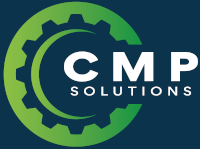Engineering is an essential component of manufacturing, meaning streamlining directly impacts various measures of success. From saving money to enhancing productivity, manufacturing companies can make noticeable improvements with the right considerations for process optimisation.
Keep reading to learn how we believe the impacts of such improvements can lead to attainable successes at CMP Solutions.
What Is Process Optimisation for Manufacturing?
Many companies have a range of goals to meet, which often rely on constant management from team members. However, by undergoing the process of process optimisation, these changes can be streamlined and enhance success rates.
Process optimisation for manufacturing uses proven methods of improvement and defined calculations to create the best processes for manufacturing systems. This means finding the optimal combination of input variables, such as material selection, processing techniques, and product specifications, to produce the best output. Businesses can choose their success factors, but productivity, cost and performance are the most common.
What Measures of Success Can Be Derived From Process Optimisation for Manufacturing Processes?
The impact of engineering optimisation has many effects on manufacturing with the main ones being as follows:
Productivity and Outputs
Companies can take the guesswork out of manufacturing results by understanding the ideal formula for improved outputs. This is achieved through the reduction in wasted time and improvements to how operations are completed. Furthermore, there is less chance of issues arising during manufacturing as bottlenecks have been accounted for and adjustments made. Finally, these processes also allow for future proofing to be considered as the same formulas for success can be applied to new manufacturing needs.
Sustainability Objectives
Process optimisation also ensures that manufacturing lines are efficient. By only using resources essential for outputs, environmental impacts are minimised. This also positively impacts areas such as waste disposal and brand reputation, as manufacturers can provide evidence of better performance levels.
Cost Balancing and Reduction
One of the main reasons that companies should optimise process methods is to save money. By analysing manufacturing efficiencies versus required outputs, costs can also be budgeted with higher levels of accuracy. This is particularly useful when costs inevitably fluctuate, meaning a view of intended performance can still be viewed. Further ways to reduce spending are achieved by less resource consumption, optimisation of technology, and less waste.
Workforce Improvements
Process optimisation improves employee management in two ways. Firstly, it means that accurate needs for workforce support are identified, improving the efficiency of budget spending on employees. Additionally, engineering calculations mean a skilled workforce is required, leading to more demand for these professionals. A common misconception is that employees lose work through process optimisation. The reality is that more jobs can be created as companies have the funds and knowledge to maximise the investment of good employees.
How Can CMP Solutions Make a Difference?
We offer cost improvement programmes that are proven to work. As outlined by the results you will see when using our cost improvement calculator, we have the know-how to help companies achieve a stronger ROI as well as utilise their workforce more effectively.
Get in touch to learn more.





